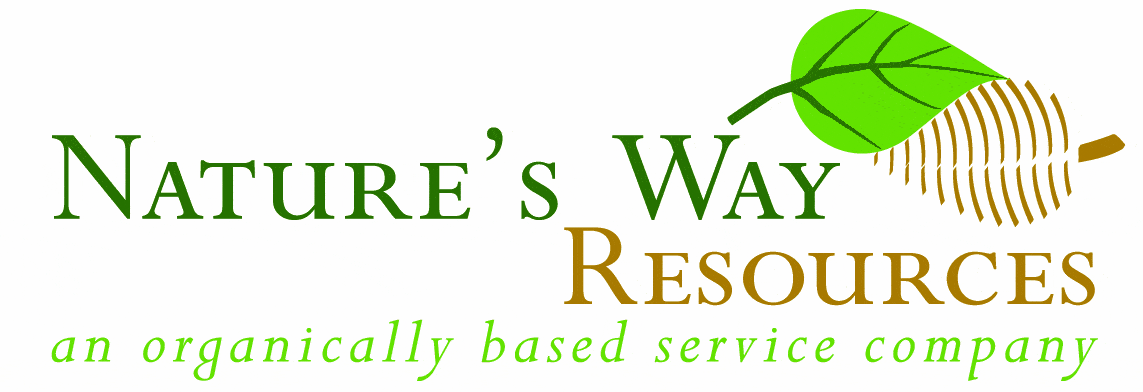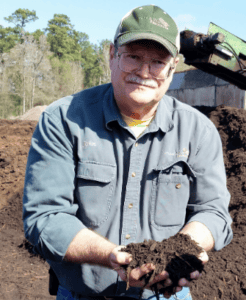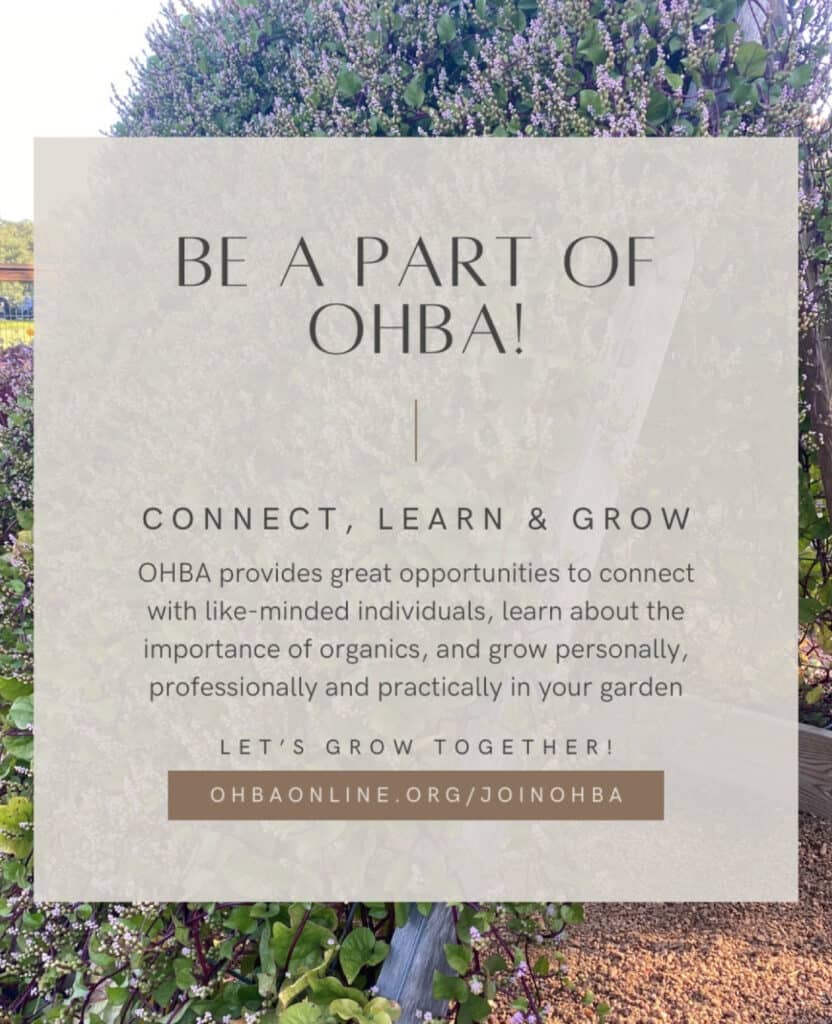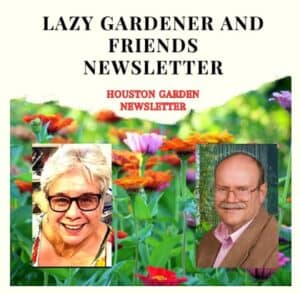 Nature’s Way Resources is proud to produce & email you this free weekly newsletter. We have no ads, but sponsors do graciously help support this project as a public service. Please note their names below & show your gratitude for this free service by patronizing their businesses! To become a sponsor, call (936) 273-1200
Nature’s Way Resources is proud to produce & email you this free weekly newsletter. We have no ads, but sponsors do graciously help support this project as a public service. Please note their names below & show your gratitude for this free service by patronizing their businesses! To become a sponsor, call (936) 273-1200
Nature’s Way Resources owner John Ferguson, “The Lazy Gardener” Brenda Beust Smith and Pablo Hernandez welcome your feedback and are so grateful to the many horticulturists who contribute their expertise
Click here to join our email list
CLICK HERE for PDFs OF PAST LG&F NEWSLETTERS
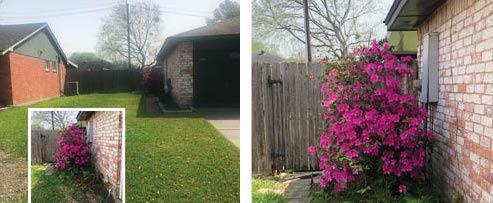
Decades ago, this looked like great spot for an azalea.
Now she’s huge, a breathtaking view when sun hits her. But . . .
. . . SUN ONLY REACHES HER A SHORT PERIOD EACH DAY!
BY BRENDA BEUST SMITH
 WHEN THIS SPLENDID COLOR APPEARS, to gaze upon his gorgeous, almost roof-high azalea (right), Ron Megow has to walk around to a seldom-used side of his house and/or back out of his garage. Her main admirers are passersby who glance her way during the brief period when the sun is temporarily in one very specific angle. Rest of time, she’s in dark shade (top).
WHEN THIS SPLENDID COLOR APPEARS, to gaze upon his gorgeous, almost roof-high azalea (right), Ron Megow has to walk around to a seldom-used side of his house and/or back out of his garage. Her main admirers are passersby who glance her way during the brief period when the sun is temporarily in one very specific angle. Rest of time, she’s in dark shade (top).
Azaleas usually don’t require (like!) full direct hot sun. But they need at least some reflected brightness. Why show you this? To urge you to get to know your yards well BEFORE BUYING PLANTS at our myriads of wonderful upcoming plant sales!
ALSO REMEMBER: Ours is truly a unique subtropical area, a “Slightly-Southeast Coastal” region. Smart gardeners plan ahead and landscape wisely for fluctuating blistering heat, increasingly freezing cold, drought-floods-heavy rains, monster winds and variety of soils!
GOT YOUR RUNNING SHOES ON?
Our Calendar below lists TEN major local plant upcoming sales, all by nonprofit groups, most also generously listing available plants online! Check provide links before you go for exciting, hardy, often new-to-our-area plants tried & highly recommended by local gardening members. Many sale workers joined these groups because once, like many of us, they bought & killed many plants and wanted to learn how to do things right. USE THEM —but DON’T monopolize, Have pencil/paper/phone to record what they say.
FOR QUICKEST RECOMMENDATIONS: Asking someone to accurately visualize YOUR yard from verbal descriptions is difficult, if not impossible. TAKE pictures/sketches of separate problem areas. Note: North, South, East & West on printouts. Include shade spots and times of day shade heaviest.
Are you even aware of all your shade spots during day? Do they change from month to month? Most do. Do neighbor’s trees shade your yard? When? Specifically where (which probably changes with seasons)? Areas where water stands? Dog likes to dig? These don’t have to be perfect sketches. They’re just to give your garden sale helper a TIME-SAVING, overall perspective.
Remember, folks behind counters were (or may still be) most likely just like you, with same challenges. Start with making an overall broad span picture of your front and back yard. It can be a pad or spiral notebook! Mark it with N, S, E, & W. Lightly (different) color areas with morning, noon & afternoon sun, Take closeups of exact difficult spots you’re buying for (hot sun, bad drainage, traffic, etc).
Before you go, using sketch, use links to review online websites’ lists for sales. Note those you’d like to try. A few have a pre-sale option, but not all.

 TIP O’ TROWEL TO MERCER BOTANIC GARDEN’S BOOTH MAP! Finding specific plants you want can be so frustrating. Workers are happy to point way, but so many gorgeous en-route plants always get me off track! Maps like Mercer’s are exactly what I need to go straight to “Must Haves” before they all disappear!
TIP O’ TROWEL TO MERCER BOTANIC GARDEN’S BOOTH MAP! Finding specific plants you want can be so frustrating. Workers are happy to point way, but so many gorgeous en-route plants always get me off track! Maps like Mercer’s are exactly what I need to go straight to “Must Haves” before they all disappear!
- HOUSTON’S GORGEOUS AZALEA BLOOM SEASON is starting (or will start) soon. RIVER OAKS GARDEN CLUB’S AZALEA TRAIL is now biennial, so not until next year: Fri, Mar 6-8, 2026. Still plenty of gorgeous azaleas to see now. Check these links . . .
- BAYOU BEND COLLECTION AND GARDENS (Pictured above)
- HERMANN PARK’s (1) CONSERVANCY JAPANESE GARDEN; (2) MCGOVERN CENTENNIAL GARDENS, and MORE
- MERCER BOTANIC GARDEN
Also…
- Check in with MEMORIAL PARK (713.863.8403) about status of azaleas planted on their Buffalo Bayou banks.
- Know more great azalea-viewing sites? Do share! lazygardenerbrenda@gmail.com
 TRUTH IN AZALEA GROWING: One story in my “Lazy Gardener’s Guide” notes “Azaleas: Some Can … Some Can’t … “ –— My longtime neighbor, Jerry Smith, had HUGE azaleas growing atop his front-yard ditch. Attempting to copy his success, I planted 6 azaleas atop of our ditch. They all died. Tried more …”
TRUTH IN AZALEA GROWING: One story in my “Lazy Gardener’s Guide” notes “Azaleas: Some Can … Some Can’t … “ –— My longtime neighbor, Jerry Smith, had HUGE azaleas growing atop his front-yard ditch. Attempting to copy his success, I planted 6 azaleas atop of our ditch. They all died. Tried more …”
“Dug holes, little mounds of soil in center, loosened azalea soil and draped them over the mound so half root ball was above ground (like experts said to). Carefully mounded soil up over them, mulched well with pine bark, fed them azalea food, kept them watered in summer. They all died. Gradually I began planting other — far more successful — things in that area. One day I out working in that bed when another neighbor walked by. “Ah, ha!” she said, “I see you’re working in your AZALEA GRAVEYARD today!”
- SPEAKING OF AZALEAS, NEVER PRUNE UNTIL AFTER THEY BLOOM!! Prune azalea (only if absolutely have to) AFTER they bloom. Ditto for bridal wreath and camellias. They will almost immediately start setting buds for next spring’s blooms. Picture this as you plant: Azalea roots don’t grow down. They spread out sideways in upper soil levels. They love a good pine needle or other slightly acidic NATURAL mulch.
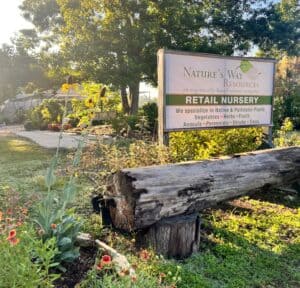 ATTN. GARDEN/PLANT GROUPS — Nature’s Way Resources offers free guided tours of NWR’s extensive nursery/soil/mulch facilities for garden clubs, plant societies and other plant-oriented, organized groups. As usual, NWR’s now-expanded meeting site is free to above groups. Reservations a must for both.
ATTN. GARDEN/PLANT GROUPS — Nature’s Way Resources offers free guided tours of NWR’s extensive nursery/soil/mulch facilities for garden clubs, plant societies and other plant-oriented, organized groups. As usual, NWR’s now-expanded meeting site is free to above groups. Reservations a must for both.
- SUBMITTING CALENDAR EVENTS?: These will in next upcoming newsletter ONLY IF SUBMITTED IN OUR EXACT FORMAT or they may be held until can be reformatted.
- FYI: JOHN’S COLUMN BELOW includes herb notes. Calendar below includes local HERB SALES upcoming!
Brenda Beust Smith’s column is based on her 40+ years as the Houston Chronicle’s “Lazy Gardener” column — lazygardenerbrenda@gmail.com Brenda’s column focuses ONLY on the Greater Houston Area
John’s Corner
NEWS FROM THE WONDERFUL WORLD
OF SOIL AND PLANTS
Subject: compost arsenic pesticides and cancer sewage sludge and cancer herbs and heavy metals
Last week I mentioned a book on Regeneration. One step in regeneration is using compost. The link below is to a short six-minute video on compost, by the organization Kiss the Ground.
We learn more about the importance of microbes every day. New research has found that bacteria working with minerals in the soil can convert arsenic (As) in the soil as arsenite (a very toxic form) to arsenate (a much less toxic form).
As the bacteria break down the mineral goethite (an iron mineral) it promotes chemicals that change the chemical form of arsenic in the soil. If humic acid is present, then the conversion is enhanced. Humic acid is produced by decaying organic matter, and a good quality compost is full of it. Journal Eco-Environment & Health (2024).
A new study in the journal GeoHealth (2025) evaluated 22 years of cancer data from Nebraska, which has the second highest childhood cancer rate in the country. They found that when children are exposed to multiple pesticides, cancer rates significantly increase. Another reason to use modern organic methods in gardening and purchase organic certified foods whenever possible.
We have been experiencing extreme drought in many areas which have resulted in numerous wildfires. The organization EcoWatch found that wildfire suppressants often contain ammonia, cadmium (Cd) and chromium (Cr). “Some retardants had levels of toxic metals up to 2,880 times what is allowed in drinking water”. Journal Environmental Science and Technology Letters (2025).
Another paper reported by EcoWatch was on research at the University of Washington that found that coffee grounds and mushroom spores (fungi) can be 3D printed into Compostable plastic alternatives Journal 3D Printing and Additive Manufacturing (2025).
I look forward to gardening pots being made from this material so we can just plant the pot and all without having to remove it.
A recent study published in the medical journal Lancet Global Health found that half of the world’s population is lacking in essential micronutrients. Micronutrient deficiencies lead to multiple significant health issues from disease to pregnancy complications. They found the food supply was energy dense but nutrient poor. Another reason is to use modern organic methods and grow as much of our own food as possible and purchase organic certified foods if we cannot.
Micronutrients are good for our plants and microbes in the soil also. They help plants be more resistant to disease and help the plants immune system resist insect attacks also by increasing the complex sugars in the sap (increases the Brix reading).
We have talked about the dangers of using sewage sludge (biosolids) or compost made from sewage sludge many times. “The EPA released a new report that sewage sludge applied to farmland can cause cancer and other diseases in people who live near where it is being applied or consume tainted milk, beef or other foods from these fields”. Sustainable Pulse 2025
Various reports state that sewage sludge is used on 20-30% of all our food crops and on pastures where cattle are grazed. There is no labeling requirement, hence the only way to know for sure and protect your family is to grow one’s own food or purchase organic.
Last week I went to the herb fair and plant sale in Roundtop, Texas, that was put on by the Herb Society. I was amazed how large a plant sale it was, and by the variety of plants available. I observed a large variety of herbs being sold. I believe one of the reasons is that home grown herbs just taste better. They also provide food for various pollinators, host plants for several species of butterfly caterpillars, and many are quite beautiful in our gardens.
Another reason is that more people are growing their own herbs (spices) as many brands purchased in grocery stores are contaminated. Consumer Reports tested 126 spice products for heavy metals, and they found that one third of them had high levels of arsenic (As), lead (Pb), and cadmium (Cd) that cause health problems!
SPONSORSHIP
If you are interested in becoming a sponsor, please contact us at 936-273-1200 or send an e-mail to: lazygardenerandfriends@gmail.com
ABOUT US
BRENDA BEUST SMITH WE KNOW HER BEST AS THE LAZY GARDENER . . .
- but Brenda Beust Smith is also:
- a national award-winning writer & editor
- a nationally-published writer & photographer
- a national horticultural speaker
- a former Houston Chronicle reporter
When the Chronicle discontinued Brenda’s 45-year-old Lazy Gardener” print column — started in the early ’70s as a fun side-project to reporting, it then ranked as the longestrunning, continuously-published local newspaper column in the Greater Houston area. The name, she says, is not just fun, it’s true.
Brenda’s gradual sideways step from reporter into gardening writing led first to an 18-year series of when-to-do-what Lazy Gardener Calendars, then to her Lazy Gardener’s Guide book which morphed into her Lazy Gardener’s Guide on CD, which she now emails free upon request.
Brenda became a Harris County Master Gardener and, over the years, served on theboards of many Greater Houston area horticulture organizations. She hosted local radio and TV shows, most notably a 10+-year Lazy Gardener specialty shows on HoustonPBS (Ch. 8) and her call-in “EcoGardening” show on KPFT-FM.
For over three decades, Brenda served as Assistant Production Manager of the GARDEN CLUB OF AMERICA’S “BULLETIN” magazine. Although still an active broad-based freelance writer, Brenda’s main focus now is THE LAZY GARDENER & FRIENDS HOUSTON GARDEN NEWSLETTER with John Ferguson and Pablo Hernandez of Nature’s Way Resources.
A native of New Orleans and graduate of St. Agnes Academy and the University of Houston, Brenda lives in Humble, TX, and is married to the retired Aldine High School Coach Bill Smith. They have one son, Blake.
Regarding this newsletter, Brenda is the lead writer, originator of it and the daily inspiration for it. We so appreciate the way she has made gardening such a fun way to celebrate life together for such a long time.
About her column, Brenda says: “I don’t consider myself a ‘garden writer.” I started out 50+ years ago as a very lazy “gardening reporter.” I still feel that way today. I hope my columns inspire/help newcomers, but I do not write to them. I write to very experienced gardeners who want to expand their horizons.
JOHN FERGUSON
John is a native Houstonian and has over 35 years of business experience. He owns Nature’s Way Resources, a composting company that specializes in high quality compost, mulch, and soil mixes. He holds a MS degree in Physics and Geology and is a licensed Soil Scientist in Texas.
John has won many awards in horticulture and environmental issues. For years he represented the composting industry on the Houston-Galveston Area Council for solid waste. His personal garden has been featured in several horticultural books and “Better Homes and Gardens” magazine. His business has been recognized in the Wall Street Journal for the quality and value of their products. He is a member of the Physics Honor Society and many other professional societies. John is the co-author of the book Organic Management for the Professional.
For this newsletter, John contributes articles regularly and is responsible for publishing it.
PABLO HERNANDEZ Pablo Hernandez is the special projects coordinator for Nature’s Way Resources. His realm of responsibilities include: serving as a webmaster, IT support, technical problem solving/troubleshooting, metrics management and quality control. Pablo helps this newsletter happen from a technical support standpoint.
Download the Newsletter with Our Events Calendar Below!
